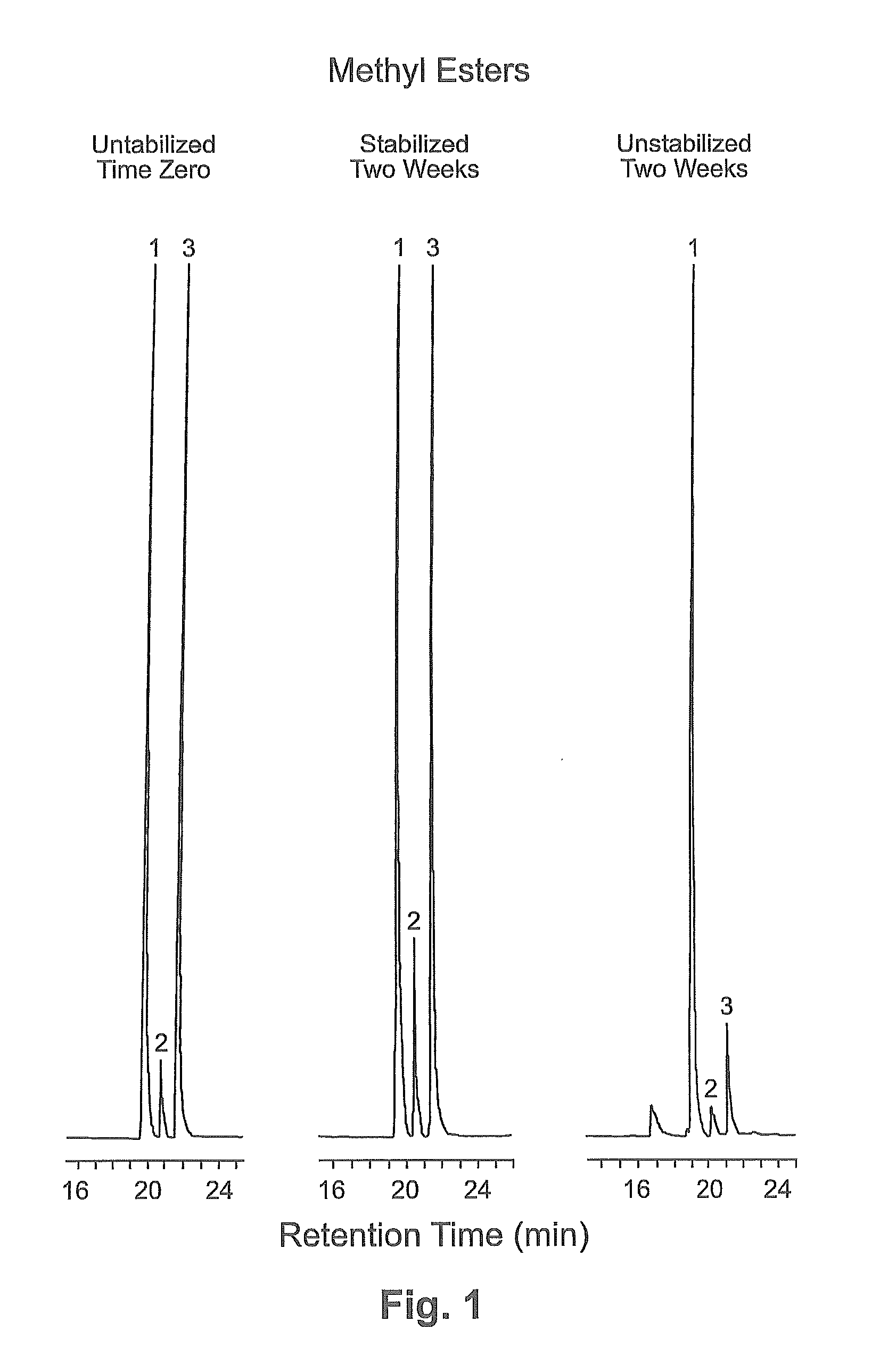Stabilized synthetic brood pheromone and race-specific ratios of components for manipulating the behavior and physiology of honey bees
a technology of stable synthetic brood pheromone and race-specific ratio, which is applied in the direction of anhydride/acid/halide active ingredients, biocide, apiculture, etc., can solve the problems of little, if any, brood pheromone being produced within the colony, no commercial products have been developed, and products incorporating either natural or synthetic pheromones would have almost no shelf life, so as to increase the ratio of pollen
- Summary
- Abstract
- Description
- Claims
- Application Information
AI Technical Summary
Benefits of technology
Problems solved by technology
Method used
Image
Examples
example 1
Formulation
[0041]Because of the possibility of tainting honey, only food-grade antioxidants were considered as potential stabilizers. Brood pheromone was formulated with tertiary-butylhydroquinone as a test stabilizer in the following proportions (percentages weight / weight) and amounts as follows: methyl palmitate 3% (0.0225 g), ethyl palmitate 3% (0.0225 g), methyl stearate 17% (0.1275 g), methyl oleate 24.95% (0.1871 g), ethyl stearate 7% (0.0525 g), ethyl oleate 8% (0.0600 g), methyl linoleate 2% (0.0150 g), ethyl linoleate 1% (0.0075 g), methyl linolenate 21% (0.1575 g), ethyl linolenate 13% (0.0975 g), and tertiary-butylhydroquinone 0.05% (0.0004 g). Components were mixed at approximately 20° C. in the above order using a magnetic stirrer and were blended until homogenous, resulting in 0.75 g of product.
example 2
Chemical Stability
[0042]Short-term and long-term stability studies were conducted, with simplified blends of potentially unstable brood pheromone components mixed in approximately the same proportions as in Example 1. Short-term evaluation for a two-week duration was done on blends of methyl oleate, methyl linoleate and methyl linolenate, and ethyl oleate, ethyl linoleate and ethyl linolenate, each with and without tertiary-butylhydroquinone. Twenty-week tests were done with identical blends as for the two-week experiments, but 72-week tests had methyl and ethyl palmitate and stearate added in the appropriate proportions to their respective blends. Approximately 250 mg of a blend was placed in a 4 mL (15×45 mm) plastic vial (Chromatographic Specialties) fitted with a diffusion insert screw cap (Agilent Technologies) with a 1 mm diameter hole to allow air circulation over the sample. All blends were continuously held at a constant temperature of 30° C.
[0043]For analysis by capillary ...
example 3
Longevity of Stabilized Brood Pheromone Measured by Sucrose Response Threshold
[0049]Honey bees respond reflexively by extending the proboscis when a drop of sucrose solution is applied to the antennae. This is called the proboscis extension response threshold (PER-RT) assay to sucrose. The assay consists of a sucrose concentration course of 0.1, 0.3, 1, 3, 10 and 30% (wt / vol), corresponding to a logarithmic series of −1, −0.5, 0, 0.5, 1 and 1.5. The antenna of each bee is touched once with a droplet of sucrose. The lowest concentration that causes proboscis extension is interpreted as an estimate of individual sucrose response threshold (Page et al. 1998; Pankiw and Page 1999). The results from the PER assay with ascending concentrations of sucrose are transformed to sucrose scores. A PER score is directly related to the response threshold of the individual bee, because most bees continue to respond to all increasing concentrations of sucrose following initial response. A PER score ...
PUM
| Property | Measurement | Unit |
|---|---|---|
| water content | aaaaa | aaaaa |
| temperature | aaaaa | aaaaa |
| temperatures | aaaaa | aaaaa |
Abstract
Description
Claims
Application Information
 Login to View More
Login to View More - R&D
- Intellectual Property
- Life Sciences
- Materials
- Tech Scout
- Unparalleled Data Quality
- Higher Quality Content
- 60% Fewer Hallucinations
Browse by: Latest US Patents, China's latest patents, Technical Efficacy Thesaurus, Application Domain, Technology Topic, Popular Technical Reports.
© 2025 PatSnap. All rights reserved.Legal|Privacy policy|Modern Slavery Act Transparency Statement|Sitemap|About US| Contact US: help@patsnap.com



